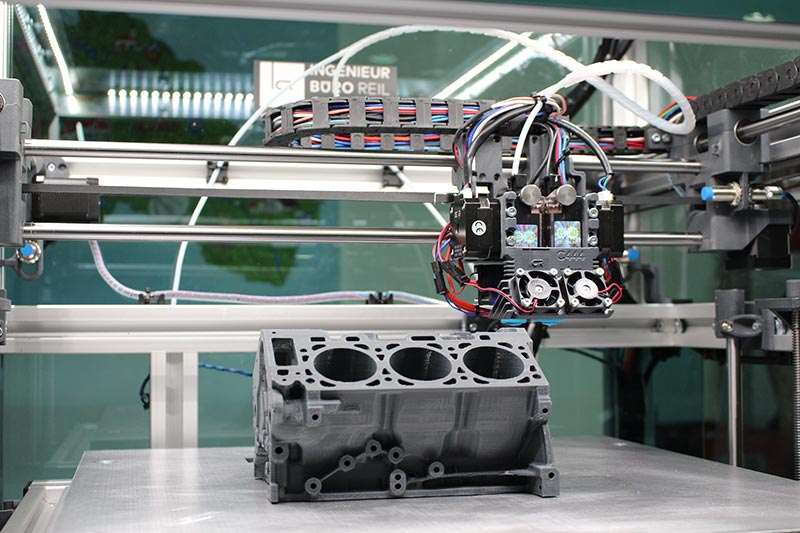Zain Hasnain, Mechanical Engineer
zainusyed313@gmail.com | linkedin.com/in/zain-abbas-hasnain
Abstract
Additive manufacturing and 3D printing have emerged as disruptive technologies,
revolutionizing the manufacturing industry worldwide. This article provides an overview of the
recent advancements in additive manufacturing. Additionally, it discusses how industries in
Pakistan, particularly in the pharmaceutical and power generation sectors, can harness the
potential of these technologies to improve efficiency, reduce costs, and drive innovation.
Introduction
Additive manufacturing, often referred to as 3D printing, has redefined the way products are
designed, prototyped, and manufactured. In contrast, additive manufacturing builds objects
layer by layer, enabling unprecedented design flexibility and customization. As a result,
industries around the world are increasingly adopting 3D printing technologies to improve
prototyping, production, and supply chain efficiency.
Advancements in Additive Manufacturing
- Materials Diversity
One of the significant advancements in additive manufacturing is the increased range of
materials available for 3D printing. Initially, 3D printing was limited to plastics, but it has now
expanded to metals, ceramics, and composites. As of 2021, over 50 different types of materials
could be used in 3D printing, ranging from plastics to metals and ceramics. - Speed and Accuracy
Advances in printer technology have significantly improved the speed and accuracy of 3D
printing. High-speed printers, with improved precision, enable rapid production of complex
components with tight tolerances. This is particularly valuable in sectors where precision and
speed are critical, such as automotive and electronics manufacturing.
High-speed 3D printers, such as the Carbon M2, can print at speeds of up to 20 times faster
than traditional 3D printers. - Mass Customization
3D printing allows for mass customization with ease. Mass customization enables companies to
cater to individual customer preferences while maintaining the efficiency of mass production.
According to a Deloitte survey, 91% of consumers expressed interest in customized products,
and 1 in 5 was willing to pay a 20% premium for such items. - Reduced Waste
Additive manufacturing is inherently more sustainable than traditional manufacturing methods.
By building products layer by layer, 3D printing minimizes material waste. This is not only
environmentally friendly but also cost-effective. Traditional manufacturing methods can
generate up to 30% waste material, whereas 3D printing typically produces less than 5% waste.
Applications in the Pharmaceutical Sector
The pharmaceutical industry in Pakistan can benefit significantly from additive manufacturing.
Here are some potential applications:
- Customized Medications
3D printing can produce personalized medications with specific dosages and release profiles.
This enables the pharmaceutical sector to address individual patient needs effectively. This
could be especially beneficial in managing chronic diseases and improving patient adherence.
The FDA approved the first 3D-printed medication, Spritam, in 2015. It dissolves faster than
traditional pills and can contain precise dosages. - Prototyping Drug Delivery Systems
Additive manufacturing can accelerate the prototyping of drug delivery systems, such as
inhalers or transdermal patches. This technology allows pharmaceutical companies to test
various designs quickly, reducing time to market.
Applications in the Power Generation Sector
The power generation sector in Pakistan can leverage additive manufacturing in several ways:
- Customized Turbine Components
Power plants can utilize 3D printing to create customized turbine components, such as blades,
with improved efficiency. This can lead to increased power generation and reduced
maintenance costs. GE successfully 3D-printed a functioning jet engine, demonstrating the
capabilities of 3D printing for highly customized, efficient components. - Rapid Prototyping for Energy Storage
Additive manufacturing allows for the rapid prototyping of energy storage systems, such as
batteries and capacitors. This accelerates innovation in renewable energy and grid stabilization.
Tesla used 3D printing for rapid prototyping of components in their energy storage products,
helping to bring products to market faster. - Maintenance and Spare Parts
3D printing can be used to produce spare parts for aging power generation equipment. This
reduces downtime, extends the operational life of existing infrastructure, and saves on
replacement costs. Siemens Energy used 3D printing to manufacture replacement components
for gas turbines, reducing lead times from months to days
Conclusion
In Pakistan, the pharmaceutical and power generation sectors can capitalize on these
advancements to enhance their operational efficiency, reduce costs, and drive innovation. The
implementation of 3D printing in these sectors requires careful consideration of regulatory,
quality, and safety standards.








